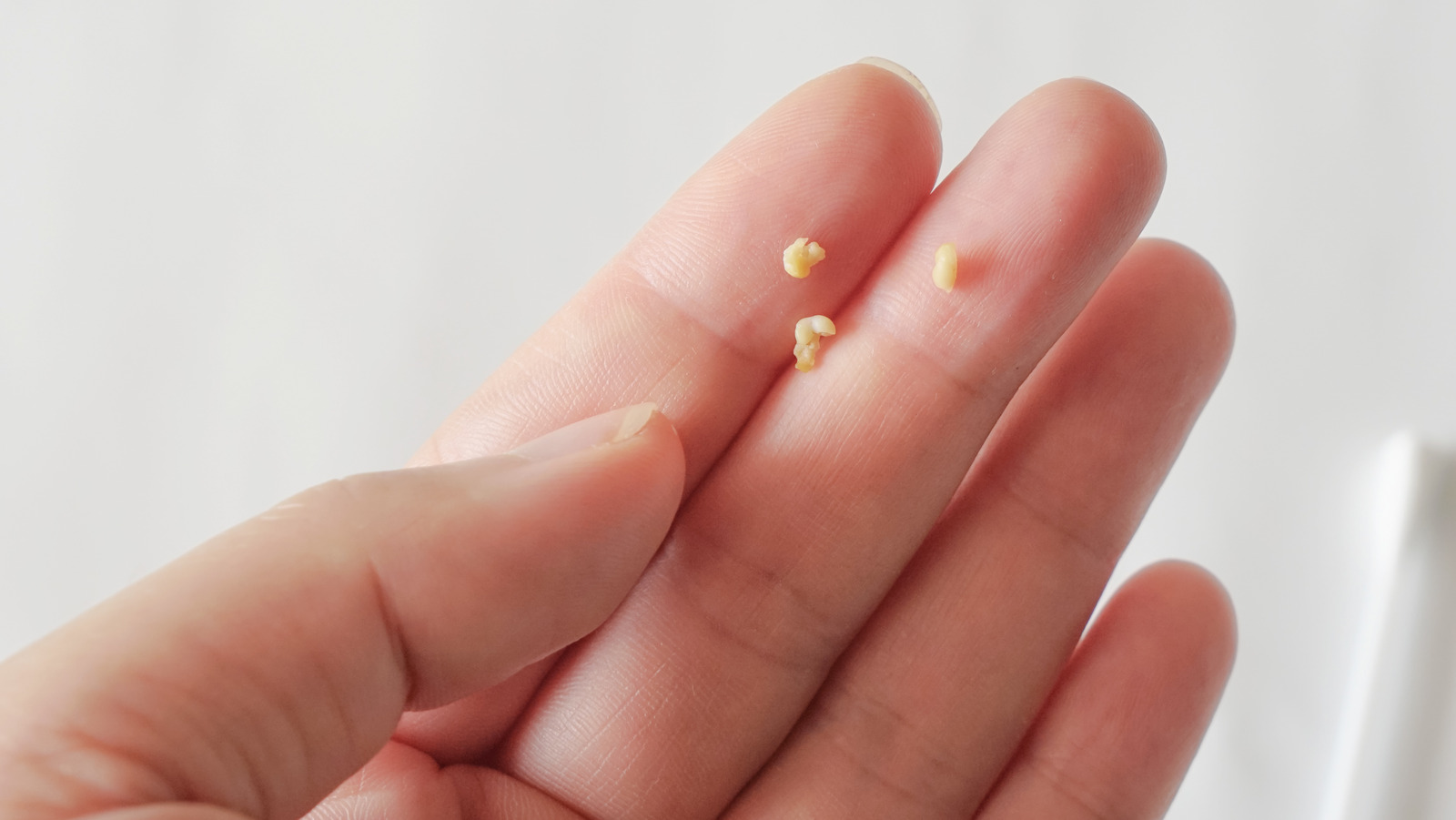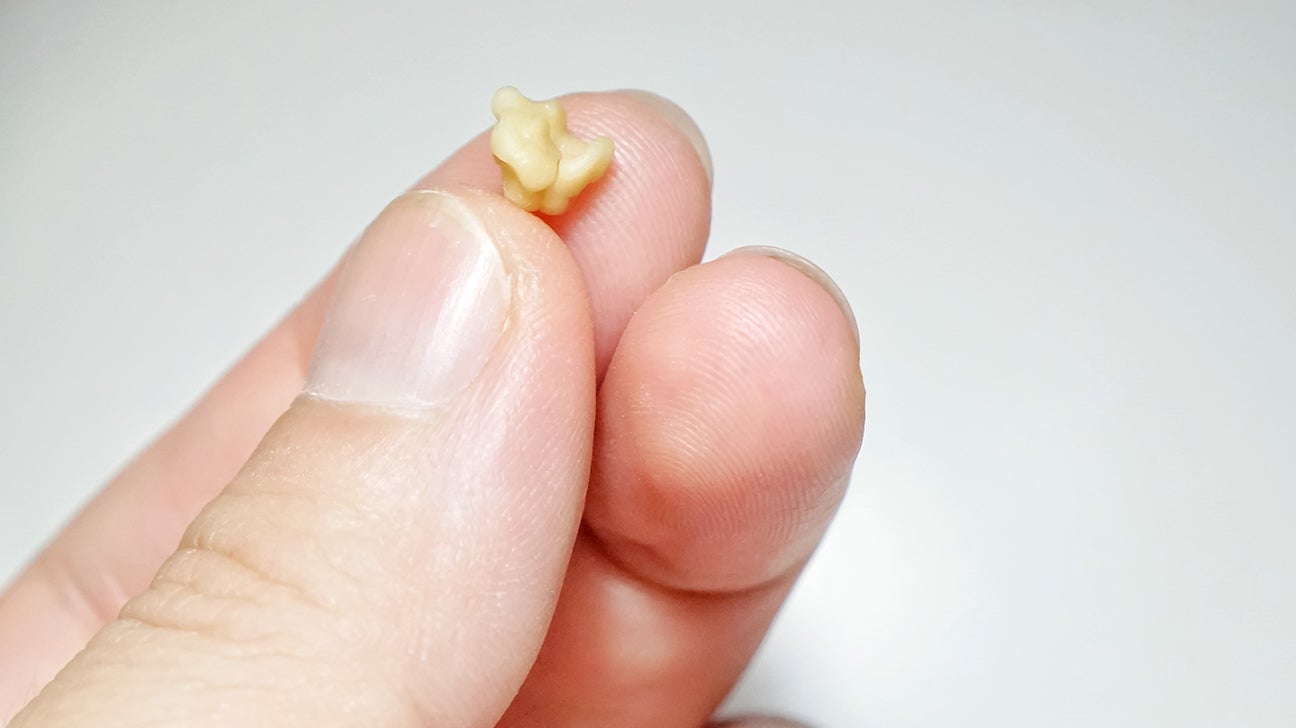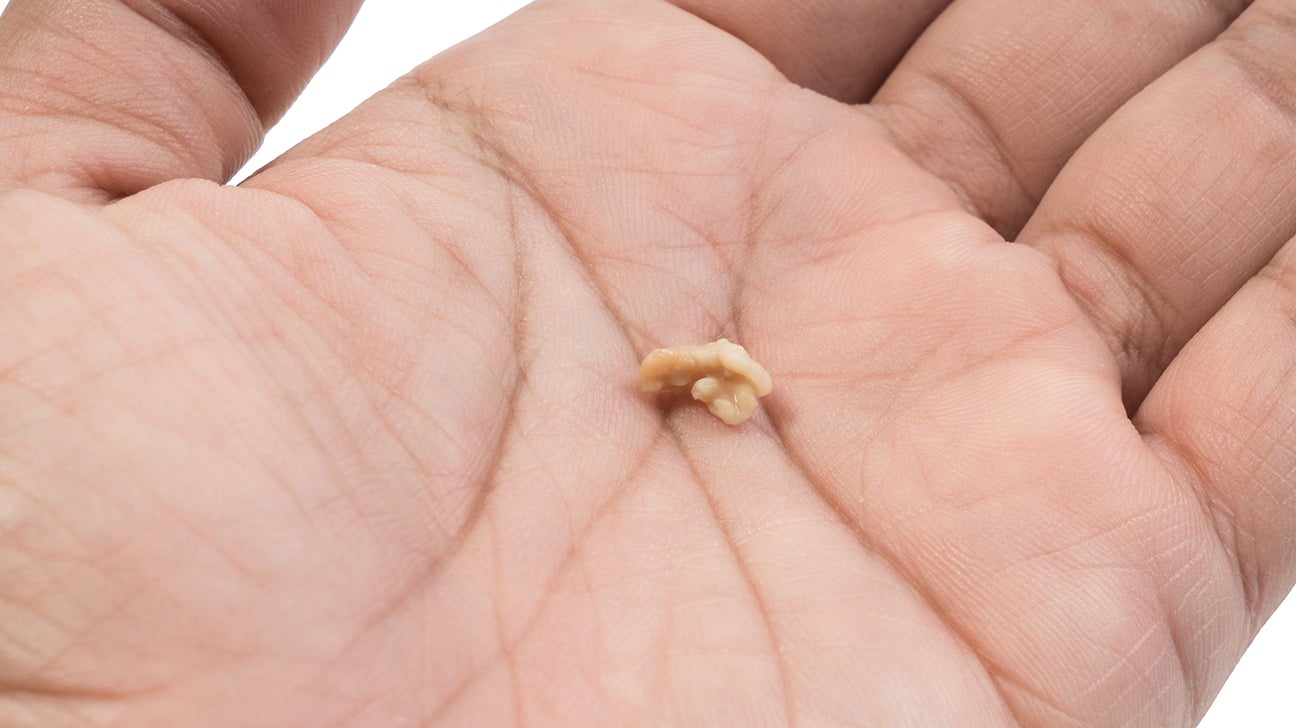
The internet is a vast repository of information and a platform where almost every unusual bodily phenomenon finds its audience. From the viral craze of pimple popping videos to the fascinating world of cyst draining and earwax removal, people are captivated by the strange and often graphic aspects of human health. One such phenomenon that has recently piqued curiosity is the mysterious case of tonsil stones. If you’ve never heard of them or are simply curious about what they are, how they form, and what you can do about them, read on. This comprehensive guide will provide you with all the essential information about tonsil stones, also known as tonsilloliths, ensuring that you’re well-informed and ready to tackle any questions on this topic.
What Are Tonsil Stones?

Tonsil stones are small, hard formations that develop on the tonsils, which are oval-shaped tissues located at the back of your throat. Medically referred to as tonsilloliths, these stone-like accumulations are typically white or yellow in color. They form when debris such as food particles, dead cells, bacteria, and even fungi become trapped in the tiny crevices known as tonsillar crypts. Despite their rather unappealing appearance, tonsil stones are usually harmless and rarely cause any serious health issues.
Many people might be unaware of their existence until they experience one of the symptoms associated with them, such as bad breath or a persistent cough. Although these formations are generally benign, their presence can be unsettling, especially when discovered unexpectedly. Tonsil stones are a topic that perfectly encapsulates the duality of human curiosity – they are simultaneously fascinating and, to some, a bit gross.
The Formation of Tonsil Stones

Understanding the process behind the formation of tonsil stones begins with a closer look at the anatomy of your tonsils. The tonsils are not smooth structures; rather, they contain numerous crevices or pits known as tonsillar crypts. These crypts are designed to trap and filter out bacteria and other foreign particles, acting as a first line of defense against infections.
However, the same structures that protect your body can sometimes lead to the unintended accumulation of debris. When food particles, dead cells, and bacteria get trapped in these crypts, they can calcify over time due to the deposition of minerals such as calcium. This calcification process transforms the trapped material into hard, stone-like formations that we recognize as tonsil stones. The development of these stones is typically slow and occurs over time, making them a common yet often unnoticed condition for many individuals.
Recognizing the Symptoms of Tonsil Stones

While tonsil stones can exist without causing noticeable symptoms, several signs may indicate their presence. Some of the most common symptoms include:
- Bad Breath (Halitosis): One of the most frequent complaints associated with tonsil stones is persistent bad breath. This occurs because the bacteria trapped within the stones produce sulfur compounds, which are notorious for their foul odor.
- Sore Throat: A mild to moderate sore throat can be a sign of tonsil stones. The discomfort arises from the irritation and inflammation caused by the stones lodged in the tonsillar crypts.
- Coughing: A persistent or occasional cough might be your body’s way of trying to expel the foreign material from your throat. In some cases, a strong cough can help loosen and bring up the stones.
- Ear Pain: Despite being located in the throat, tonsil stones can sometimes cause referred pain in the ears. This phenomenon occurs due to shared nerve pathways between the throat and the ears.
- Difficulty Swallowing: In more pronounced cases, tonsil stones might make swallowing uncomfortable, especially if the stones are large or numerous.
It is important to note that not everyone with tonsil stones will experience these symptoms. In many instances, individuals may be completely unaware of their presence until they notice an unpleasant taste or odor in their mouth. If symptoms do occur, however, they can range from mildly annoying to significantly discomforting.
Prevalence and Impact: Tonsil Stones by the Numbers

Despite their relatively low profile in everyday conversations about health, tonsil stones are more common than you might think. According to various reports, millions of people around the world, including approximately 3 million Americans annually, suffer from tonsil stones. The prevalence of this condition underlines the fact that while tonsil stones are often not discussed openly, they are a widespread issue affecting a significant portion of the population.
The impact of tonsil stones goes beyond mere physical symptoms. For many, the psychological discomfort and social embarrassment caused by bad breath or the mere sight of these formations can lead to anxiety and self-consciousness. As such, understanding tonsil stones and knowing how to manage them is crucial for maintaining both physical and emotional well-being.
Home Remedies and Professional Treatments for Tonsil Stones
One of the most reassuring aspects of tonsil stones is that they are generally not harmful and can often be managed with simple home remedies. Here are some of the most effective methods for removing tonsil stones and alleviating their symptoms:
Salt Water Gargle
A salt water gargle is a tried-and-true method for easing the discomfort associated with tonsil stones. The saline solution helps to reduce inflammation and can loosen the stones, making them easier to dislodge. To prepare the remedy, dissolve half a teaspoon of salt in a glass of warm water, gargle several times a day, and spit out the solution. This simple practice not only aids in stone removal but also promotes overall throat health.
Gentle Dislodging with a Cotton Swab
For those who are comfortable with a bit of self-care, using a cotton swab to gently tease the stones from the tonsillar crypts can be effective. It is important to exercise caution during this process to avoid causing any damage or irritation to the delicate tissues of the throat. If you are uncertain or uncomfortable performing this method, it might be best to consult a healthcare professional.
Natural Coughing
Sometimes, your body might naturally attempt to expel the tonsil stones through a strong coughing fit. While this method is less controlled, it can sometimes be sufficient for dislodging smaller stones. If you notice that coughing brings up any unusual materials from your throat, it might be an indication that tonsil stones are present.
Professional Medical Treatment
While home remedies are often effective, there are instances where professional medical treatment might be necessary. If tonsil stones persist despite your best efforts or if they cause significant discomfort, it is advisable to seek advice from a healthcare provider. In some cases, a doctor might recommend procedures such as laser cryptolysis or even tonsillectomy, particularly if tonsil stones become a chronic problem.
Tonsil Stones and Social Media: The Viral Fascination

In today’s digital age, it is not uncommon for seemingly obscure health issues to become viral sensations. The rise of social media platforms has democratized content sharing, allowing videos and photos to be disseminated worldwide in a matter of seconds. Tonsil stones have not been immune to this trend. Much like pimple popping videos, which have captivated audiences with their raw and unfiltered depiction of the human body’s inner workings, videos featuring the removal of tonsil stones have garnered significant attention online.
These videos, while graphic to some, serve as a window into the often-hidden aspects of our bodily functions. They tap into the innate human curiosity about what lies beneath the surface, even if that surface is our own skin. The popularity of these videos underscores a broader trend: people are increasingly interested in understanding the quirks of the human body, no matter how odd or off-putting they may appear.
The Role of Personal Experience and Community Engagement

One of the most compelling aspects of discussions about tonsil stones is the way they invite personal engagement and shared experiences. Many readers and viewers are prompted to ask themselves, “Have I ever experienced something similar?” or “What can I do if I notice these symptoms?” The internet, with its forums, comment sections, and social media groups, provides a platform for individuals to share their stories, offer advice, and even provide support to those who may be dealing with the discomfort of tonsil stones.
Engaging with a community that has firsthand experience can be both reassuring and informative. Personal anecdotes not only validate your own experiences but also offer practical insights into managing the condition. Whether it’s a recommendation for a particular home remedy or a cautionary tale about a more severe case, community wisdom is an invaluable resource for anyone curious about tonsil stones.
Tonsil Stones: A Harmless Condition With Manageable Symptoms
Despite the initial shock or disgust that some might feel upon learning about tonsil stones, it is important to remember that they are generally harmless. The majority of cases do not result in any serious health complications, and most people can successfully manage the condition with simple, at-home remedies. Good oral hygiene is often the best preventative measure. Regular brushing, flossing, and the use of mouthwash can help reduce the amount of debris and bacteria that might otherwise contribute to the formation of tonsil stones.
In cases where tonsil stones are persistent or cause significant discomfort, a consultation with an ear, nose, and throat (ENT) specialist may be warranted. These professionals can provide targeted advice and, if necessary, perform procedures to remove the stones safely and effectively.
Maintaining Optimal Throat Health
Preventing tonsil stones is closely linked to maintaining overall throat and oral health. Here are some tips to help you keep your throat in top condition and reduce the likelihood of tonsil stone formation:
- Stay Hydrated: Drinking plenty of water helps to keep your mouth and throat clean by flushing out food particles and bacteria.
- Practice Good Oral Hygiene: Brush your teeth at least twice a day, floss regularly, and consider using an antibacterial mouthwash.
- Regular Dental Checkups: Visit your dentist for routine checkups to ensure that any potential oral health issues are addressed promptly.
- Healthy Diet: Eating a balanced diet rich in fruits and vegetables can boost your immune system and reduce the risk of infections that might lead to tonsil stone formation.
- Avoid Smoking: Smoking can contribute to the buildup of bacteria and debris in the mouth, increasing the likelihood of developing tonsil stones.
Final Thoughts on Tonsil Stones
In summary, tonsil stones might be one of those bizarre yet common phenomena that our bodies produce, often without us even being aware. They are hard formations that develop in the crevices of your tonsils due to trapped debris, and while they can be off-putting, they are generally harmless and treatable. Whether you discover them through a viral video or experience symptoms such as bad breath or a sore throat, understanding what tonsil stones are and knowing how to manage them can go a long way in alleviating concerns.
The widespread attention that tonsil stones have received on social media only underscores the broader human fascination with our own biology. While these stones might evoke a sense of disgust in some, they also serve as a reminder of the incredible complexity of the human body—a system that continuously works to protect us, sometimes in unexpected ways.
If you have ever experienced tonsil stones or have questions about their removal, consider engaging with online communities or seeking advice from a healthcare professional. Sharing your experiences not only helps demystify the condition but also contributes to a broader conversation about throat health and overall wellness.
By staying informed and practicing good oral hygiene, you can manage tonsil stones effectively and maintain a healthy, happy throat. Remember, while the internet might sometimes present the most graphic depictions of bodily phenomena, knowledge is the best tool you have in turning something that might seem gross into a manageable aspect of your health.
Have you encountered tonsil stones before, or do you have any home remedies that have worked for you? Leave your comments below and join the conversation. Whether you’re a seasoned veteran of tonsil stone removal or just learning about this peculiar condition for the first time, your insights and experiences are valuable.
For more compelling content on unusual health topics, viral body phenomena, and tips for maintaining optimal oral and throat health, be sure to explore our other articles. The journey to better health is paved with curiosity, and every piece of information brings us one step closer to understanding the intricate workings of our bodies.
In conclusion, tonsil stones are a fascinating example of the unexpected ways in which our bodies operate. They remind us that even the smallest parts of our anatomy can have complex functions and, at times, produce unusual results. Armed with the right knowledge and a proactive approach to oral hygiene, you can navigate the world of tonsil stones with confidence. Embrace the curious side of human biology, and remember that every little quirk is part of what makes us uniquely human.
By continuing to educate yourself and sharing your experiences, you help demystify tonsil stones and contribute to a more informed, health-conscious community. So the next time you encounter a viral video or read about tonsil stone removal techniques online, you’ll know exactly what’s going on—and you might even be inspired to share your own story. Stay curious, stay healthy, and let your journey to better throat health begin today!










